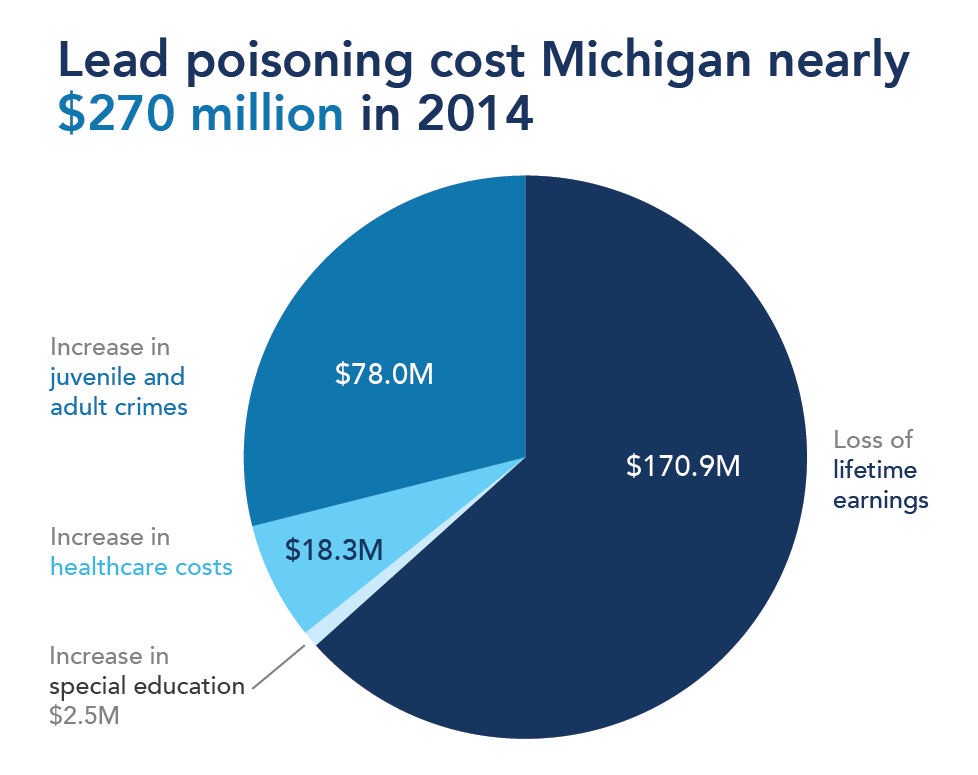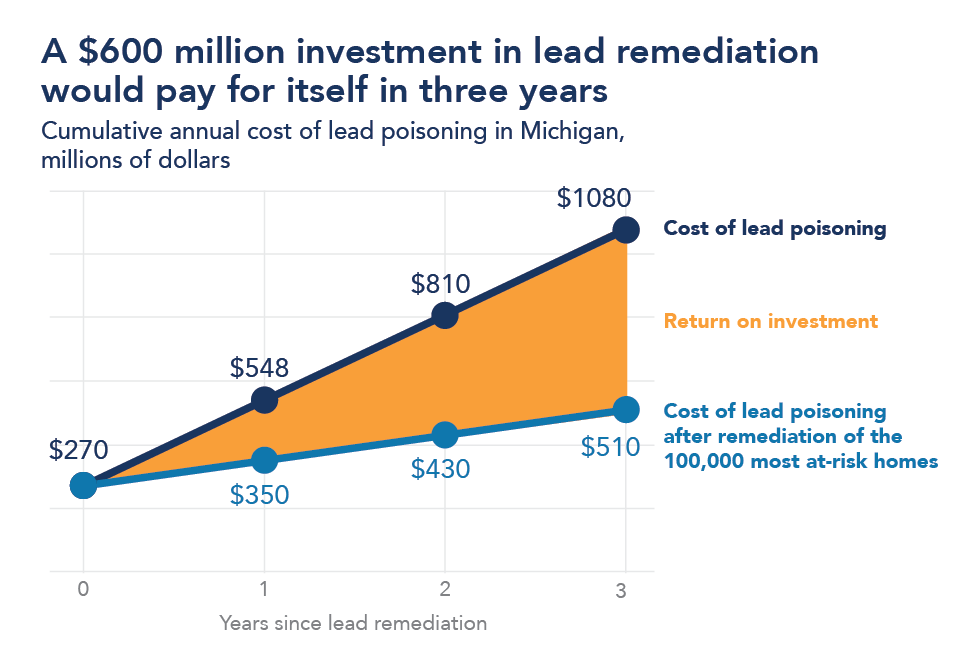The Cost of Lead Poisoning
In the Great Lakes States: The health impacts of lead are also costly. According to Altarum’s Value of Lead Prevention tool, the total lifetime economic burden of childhood lead exposure in the Great Lakes states is $22.9 billion. This includes costs of reduced lifetime productivity; increased healthcare, education, and social assistance spending; and early death.
In Michigan: Years before the Flint water crisis, lead poisoning was already a public health and economic disaster for the state of Michigan. In 2013, the Centers for Disease Control and Prevention ranked Michigan the fifth-worst state in the nation for its rate of childhood lead poisoning. Based on data from 2014, the lead poisoning of Michigan children has cost the state at least $270 million per year, $112 million of which is paid by taxpayers. Allowing our children to be poisoned by their own homes has led to increased costs in healthcare, higher rates of adult crime and juvenile delinquency, an increased need for special education, and a decline in lifetime savings. However, according to a 2016 update of the Ecology Center’s report titled Costs of Lead Exposure and Remediation: Update, a $600 million investment in lead remediation could reduce the lead poisoning of children by 70% while paying for itself in 3 years and returning taxpayer investment in 7-8 years.

“Now is the time to elevate lead poisoning of Michigan’s children to the critical public health problem that it is,”
—Rebecca Meuninck
Based on this report, the Ecology Center and a coalition of health and environmental groups are demanding the state government end lead poisoning in Michigan’s children. In the wake of the Flint water crisis, the world has been reawakened to the ongoing crisis of lead exposure. While we’ve known about the dangers of poisonous lead for years, we have failed as a society to mount a response that is scaled to the size of the problem. Many Michigan homes were built before 1978 and are likely to still contain lead paint and dust. Children living in these homes have been in danger as long as lead has been added to paint, which started in the 4th century and wasn’t prohibited in the U.S. until 1978.
Lead poisoning is a massive public health issue, but it is not insurmountable and there are cost-effective steps that we can take right now. A $600 million investment by the state can and should be used to remediate lead in Michigan’s 100,000 most at risk homes, and would likely reduce lead in children by 70%. This would free up money that Michiganders needlessly spend on the aftermath of an inexcusable public health crisis. The investment would return $190 million annually, $78 million of which would be saved by Michigan taxpayers.

“Lead exposure results in significant costs borne by Michiganders, including incarceration, special education, and loss of earnings,” Tracy Swinburn, economist and author of the report, said. “Investments in remediation have both public health and economic benefits.”


